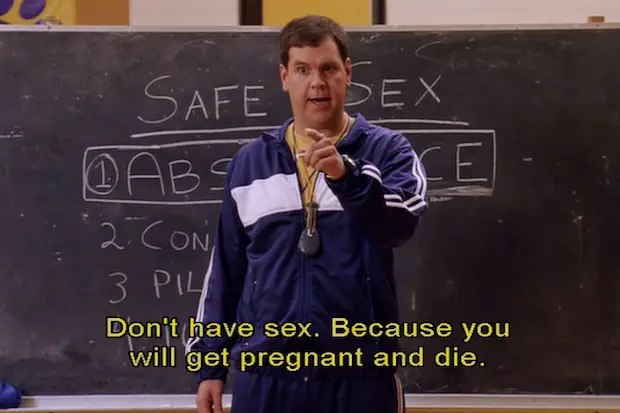Abstinence Only
At its lowest historically, the number of abstinent Americans is still larger than the population of North Carolina.
By Katie Hovan, University of Miami
“I broke up with her because I learned she’d taken a vow of abstinence.”
Such was the sentence that casually came out of my coworker Martin’s* mouth one day at work. My first instinct was to assume he was a shallow guy, but as a relatively open-minded person whose been taught to withhold judgment on first impressions, I refrained from forming a premature opinion of him. Instead, I only gave incriminating stares as he filled in the details.
Thinking they were just taking things slowly, Martin was surprised when his girlfriend of three months told him the news of her vow. Knowing that her choices wouldn’t work for him in the long run, Martin ended it. She cried, she badmouthed him to everyone she knew and so it goes. They both moved on, but Martin knew she never truly understood the big deal about her vow.
Initially, I felt bad for the girl, but having heard his version of the story, I paused and really thought about the breakup from Martin’s perspective. I decided I couldn’t blame him for his decision. What are the chances of dating someone who is sexually abstinent nowadays, anyway? There are plenty of other fish in the sea that aren’t waiting for marriage, so he might as well find one with values that align with his own. I might have even done the same if were faced with the situation.
After further thought, I also realized that I don’t even know an openly abstinent person. Years ago, perhaps I might have mentioned Nick Jonas and his purity ring, but the world watched fame (and a supermodel girlfriend) send that vow plummeting down the drain.
The real point is that talking about abstinence today is like talking about Latin.
Other than religious purposes, no one is really sure who uses it or why; it’s not exactly practical for the average person, and contrary to popular belief, it didn’t help much with the vocabulary section of the SATs.
Martin’s story sparked an intense debate, and my coworker and I began asking everyone who passed by for his or her take on the situation. The poll that ensued managed to teach me a thing or two about how sexual abstinence is perceived today while killing some time at work.
“Would you stay with a partner who was sexually abstinent?” I listened to my coworker repeat to everyone for the rest of the workday. We were met with two different responses. The first and most common reply was an honest “absolutely not,” accompanied by a look of horror at the thought. At this point, my opinion about Martin was beginning to shift. Either I was surrounded by a bunch of heartless people, or sexual abstinence was really as extinct as I’d thought.
However, out of the 15 or so coworkers that we asked, two of them chose the path less followed, claiming they would stay with someone who had taken a vow of abstinence if they really, really liked them- a valid answer, in my opinion. Even then, they made sure to stress that the person had to be someone they were seriously considering being with—say it with me, now—forever.
Ultimately, the conversation that unfolded begged the question in my mind, “Just how many people are actually practicing abstinence?” I became curious enough to find out for myself.
WaitingTillMarriage.org, a non-sectarian site for people practicing abstinence, concluded that just 3 percent of Americans successfully wait until marriage to have sex. This comes out to about 10 million people, which may not seem like much when compared to the total U.S. population. However, that’s roughly the population of North Carolina, meaning the equivalent of a state’s worth of people will wait until marriage.
The site had some even more surprising statistics. While older generations are often perceived as much more conservative, between the years 1954 and 1963 still only 11 percent of Americans successfully practiced sexual abstinence. This is a relatively low number for a time period when women still wore clothes that exposed only their arms and ankles. Another report backs this up, claiming between 68 and 90 percent of males and 50 percent of females had premarital sex back in the good old days.
However, the 8 percent decrease in sexually abstinent Americans since then seems to confirm that the number of people practicing is still declining as time progresses.
And there certainly isn’t any shame in waiting until marriage, but it’s obvious that abstinence is not the prevailing choice for the average American’s sex life.
Swallowing my pride, I apologized to Martin for the obviously rude looks I had given him when he first spoke about the breakup. After all, the other 97 percent of the American population was out there waiting to be discovered, and he didn’t see a future with his girlfriend, anyway.
And though it seems rare, one in thirty people you meet is abstinent, so it’s important to be cautious when dating new people and clear the air as soon as possible. Whether you practice abstinence or not, the most important thing is to be open from the get-go. The early stages of a relationship are crucial if things are going to last. It’s only fair to make any expectations known within a timely manner, or else both people will end up with hurt feelings and wasted time.















